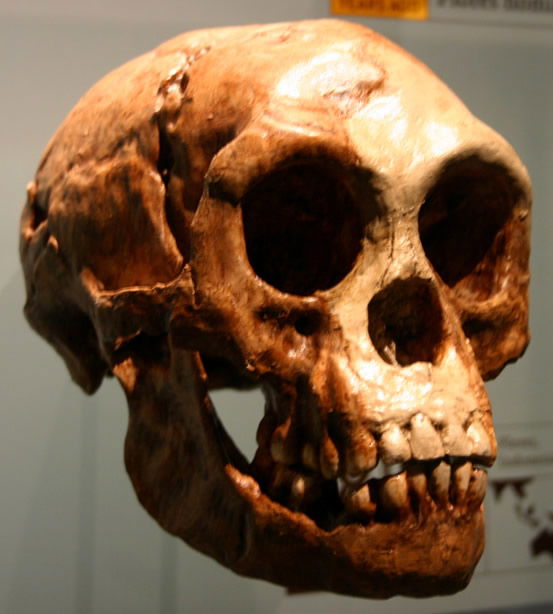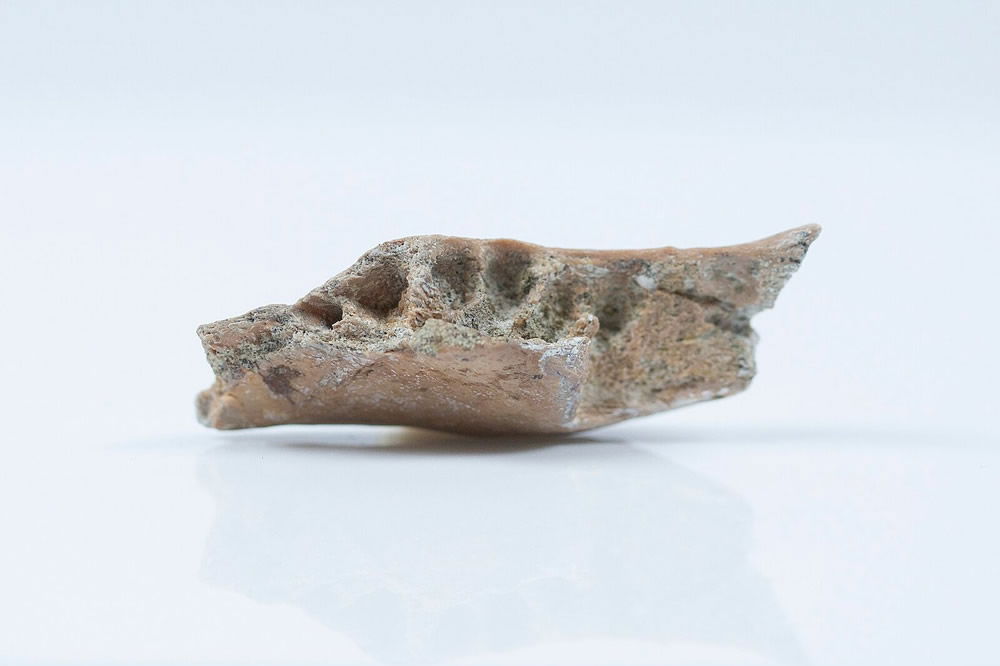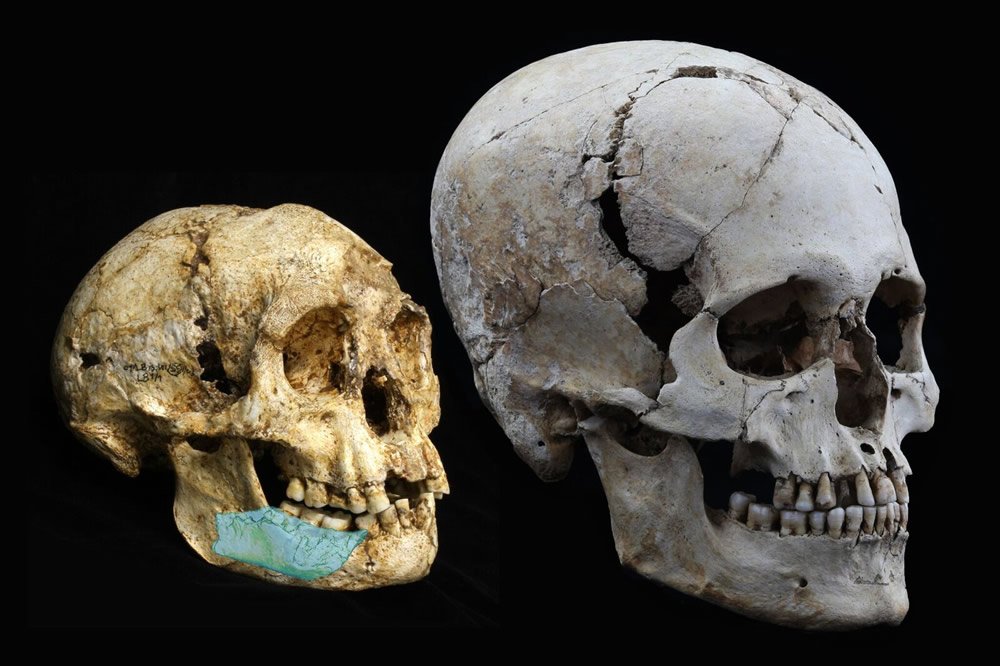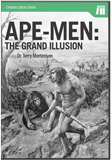
Hobbits of Flores Were an Archaic Human Variety, Studies Suggest
News to Know
Abstract
Hobbits of Flores—still human after all those years
News Sources
- Nature: “‘Hobbit’ Relatives Found After Ten-Year Hunt”
- New York Times: “New Fossils Strengthen Case for ‘Hobbit Species’”
- ScienceDaily: “New Research Counters Claim the ‘Hobbit’ Had Down Syndrome: Status Confirmed as a Fossil Human Species”
- Sci-news.com: “Homo floresiensis Remains Unique, Valid Species”
- University of Wollongong: “Remarkable New Finds Are Clues to ‘Hobbit’ Ancestry”
The latest discoveries about hobbits—the kind that once lived on the Indonesian island Flores—didn’t wait until September 22 (National Hobbit Day) for publication.1 Reports in June 2016 Nature and PLoS ONE may help further elucidate the nature of the diminutive extinct people from Flores, mysterious people affectionately nicknamed hobbits after the universally recognized characters imagined by J. R. R. Tolkien.
The skeletal remains of short individuals, including one remarkably small but human-shaped skull, have been the subject of debate ever since their 2003 discovery in Liang Bua cave along with stone tools and the leavings of a barbeque. Did the tiny Flores skull with its meter-tall skeleton and the associated bones of other very short people belong to diseased individuals or to representatives of an unusually dwarfish group of humans? Could a human being with a brain so small—as small as a chimpanzee’s— actually have the intellect to make tools and hold a cookout in a cave? Why would humans with such small brains evolve? And if the Liang Bua hobbits were typical of a whole group of humans—a separate species as the designation Homo floresiensis indicates—how were these people related to other groups of archaic humans?
Small Archaic Humans or Diseased Modern Humans?
The possibility that the Liang Bua hobbits were modern humans2 afflicted with some sort of growth disorder has been explored by a number of researchers. Studies have suggested that they had microcephaly, for instance, or hypothyroidism; but those conclusions were later rejected. The most recent such study concluded that the hobbits of Flores were modern humans with Down syndrome. This study was based on skeletal anatomy, not genetic information, as no hobbit DNA has been recovered; and obviously the researchers operated without the possibility of knowing whether the Liang Bua occupants had any of the soft tissue features generally associated with Down syndrome.
Paleoanthropologist Karen Baab and colleagues, in the latest PLoS ONE study, counter this claim that the Liang Bua hobbits had Down Syndrome. Dr. Baab’s team compared the bones from Liang Bua cave to those of modern humans with Down syndrome and determined that the few matching features are insufficient to conclusively support a diagnosis of Down syndrome.3 While the significance of the Liang Bua bones will doubtless be the subject of ongoing debate among anthropologists, Dr. Baab concludes, “There continues to be no very good evidence that this is a pathological modern human.”4

This is a cast of LB1, the small skull found in Liang Bua cave on the Indonesian island Flores in 2003. Although some scientists believe LB1 to be an ancient modern human with a growth disorder, LB1 along with its nearly complete skeleton is considered by most to be a uniquely small archaic human species known as Homo floresiensis. Image by FunkMonk, via Wikimedia Commons.
On the basis of several anatomical features, Dr. Baab like many other researchers is convinced that Homo floresiensis was an archaic human. For instance, the hobbit doesn’t have much of a chin. While modern humans typically have a protruding chin, there is considerable variation in the chin prominence of archaic humans, making plenty of room for hobbits among them. Could hobbits be a dwarfed variety of Homo erectus, a variety of archaic human whose presence has been demonstrated in Southeast Asia, and specifically on Flores? Possibly. Yet, although they share many skeletal characteristics, the hobbits are not just scaled down versions of these wide-ranging archaic people. Dr. Baab notes that Homo floresiensis have proportionately longer arms and shorter legs than the Indonesia’s Homo erectus specimens, leaving the identity of their nearest cousins among archaic humans an open question.
Archaic humans are extinct varieties of people with anatomical features that evolutionary anthropologists consider “primitive.” However, these features do not come with labels stating their age, much less their spot on the evolutionary ladder. Evolutionists labels these traits “primitive” because they are typical of people they view, on an evolutionary timescale, as ancestors of modern humans. From a biblical view of history, however, archaic humans are simply extinct people groups with sets of anatomical variations not typical among modern humans. Those characteristics do not place them in a primitive slot on some sort of evolutionary continuum between ape-like ancestors and modern humans.
Hobbits Likely the Norm on Ancient Flores
Hobbit-like fossils newly discovered at a distant site on the island of Flores may soon totally tip the anthropological scale in favor of the view that the Flores hobbits were a unique variety of human, not a few diseased outliers among the island’s population. Fragments from the Mata Menge dig site 46 miles away include a partial jaw and several teeth. These fossils resemble the teeth and jaw of LB1, the Homo floresiensis discovered in Liang Bua cave. As discussed in Nature, some of the teeth are baby teeth belonging to at least two children. The jaw’s wisdom tooth had erupted, however, indicating it belonged to an adult. And this adult jaw is even 23% smaller than that of the Liang Bua hobbit skull.
This is the partial jaw fossil found, along with several teeth, at Mata Menge. On the right is an illustration showing the corresponding location of this section of jaw on LB1, as well as the dramatic size difference between LB1 and a typical modern human skull. Images from the University of Wollongong Australia.
Australian paleontologist Gerrit van den Bergh, a leader of the project that unearthed the newest hobbits from Flores, says, “This find has important implications for our understanding of early human dispersal and evolution in the region and quashes once and for all any doubters that believe Homo floresiensis was merely a sick human (Homo sapiens).”5 He notes that the geology of Mata Menge, which suggests catastrophic mudslides likely triggered by nearby volcanic activity, is the reason researchers are finding a plethora of fossils there. Other fossils from the rock layer in which the latest fragments of Flores people were found have included many stone tools and a number of animal bones, including dwarf elephants, continuing evidence that island dwarfism induced by dietary deprivation played a role in the history of Flores inhabitants.
Island Dwarfism: Evolutionary Shrinkage?
Evolutionists are discussing what these discoveries might tell them about the course of human evolution. Dr. van den Bergh suggests that some humans of the Homo erectus variety long ago arrived on the island, perhaps in the wake of a tsunami. He, like many others, quite reasonably suggest that island dwarfism is the explanation for how the hobbits eventually became so small. Island dwarfism is a phenomenon in which the chronic lack of resources on an isolated island favors the survival of smaller and smaller varieties of the species on it. In any case, the discovery of such tiny people’s remains far from the Liang Bua cave strongly suggests that the island of Flores once hosted a human population that were indeed rather Lilliputian in size.
The morphology of the fossil teeth also suggests that this human lineage represents a dwarfed descendant of early Homo erectus that somehow got marooned on the island of Flores.
The shape of the Mata Menge teeth seems intermediate between that seen in Homo floresiensis and Homo erectus, leading Dr. van den Bergh’s team to suspect these two human species are somehow related. “All the fossils are indisputably hominin and they appear to be remarkably similar to those of Homo floresiensis,” according to his colleague and coauthor Dr. Yousuke Kaifu.6 “The morphology of the fossil teeth also suggests that this human lineage represents a dwarfed descendant of early Homo erectus that somehow got marooned on the island of Flores.”7 Given all indications that Homo floresiensis was indeed a very small variety of human, and the close association of hobbit remains at both Flores and Mata Menge with tools, it seems clear that it doesn’t take a big brain to make advanced tools and cook food, just a human one.
And because interpretations of radiometric data on a tooth and nearby sediment suggest they are about 700,000 years old, researchers are particularly amazed that the hobbits must have become so diminutively hobbit-like quite early in their evolutionary history. “What is truly unexpected is that the size of the finds indicates that Homo floresiensis had already obtained its small size by at least 700,000 years ago,” Dr. Kaifu says.8 In other words, the scientists are puzzled that the human brain and body could evolve to be so much smaller than Homo erectus in the short time they imagine passed between Homo erectus’ evolution and arrival in Asia and the appearance of Mata Menge’s hobbits. We must of course keep in mind that the 700,000 year dates assigned to the Mata Menge hobbits, like those assigned and reassigned (see footnote #1) to the Liang Bua hobbits, are based on unverifiable worldview-based assumptions, not the reliable history preserved in God’s Word where we learn that all people descended from Adam and Eve, whom God created about 6,000 years ago.
Furthermore, is any of this evolution? Not at all! The population bottleneck of the global Flood about 4,350 years ago reduced the world’s human population to eight people—Noah and his family. All the varieties of people in the world are their descendants. In the years following the Flood, after man’s disobedience led to God’s dispersal of the human population from the Tower of Babel, many groups of people would have been isolated linguistically, geographically, and genetically. Certain physical traits can certainly be magnified by reproductive isolation. It is not surprising that a number of groups therefore developed unique sets of physical characteristics. But all were human. Thus we can readily understand that so-called separate species of humans such as the Neanderthals, Homo erectus, Denisovans, early modern humans were just as human as we are.
The hobbits of Flores are one more reminder of the amazing diversity possible among the descendants of Adam.
Bible-believing creationists understand that humans did not evolve from lesser sorts of creatures but descended from Adam and Eve who were created fully human by God in His own image. Whether the entire population manifested some sort of yet-to-be-identified growth disorder, island dwarfism, or genetically inbred characteristics, the remains of these small Flores inhabitants are consistent with our biblically based understanding that variations would have appeared among isolated groups of people after the global Flood and the subsequent dispersion from the Tower of Babel. Just as many other varieties of humans have become extinct since those days, we no longer have people the size of the Flores hobbits walking among us. Nevertheless, the hobbits of Flores are one more reminder of the amazing diversity possible among the descendants of Adam.
Further Reading
- The Return of the Hobbits
- Japanese Study Affirms Hobbits’ Humanity
- Is Homo floresiensis a Legitimate Human “Hobbit” Species?
- Were Cavemen Real?
For More Information: Get Answers
Remember, if you see a news story that might merit some attention, let us know about it! (Note: if the story originates from the Associated Press, FOX News, MSNBC, the New York Times, or another major national media outlet, we will most likely have already heard about it.) And thanks to all of our readers who have submitted great news tips to us. If you didn’t catch all the latest News to Know, why not take a look to see what you’ve missed?
(Please note that links will take you directly to the source. Answers in Genesis is not responsible for content on the websites to which we refer. For more information, please see our Privacy Policy.)
Footnotes
- September 22 is the birthday of Tolkien’s fictional hobbits Bilbo and Frodo Baggins.
-
Even before the latest studies were published, some scientists had already suggested that modern humans arrived in Indonesia too late to explain the Liang Bua hobbits as any sort of diseased modern humans. Earlier this year, a group who believed an incorrect date had been assigned to Liang Bua’s famous occupants reanalyzed the cave’s geological layers. Their March 2016 study in Nature asserted that the Liang Bua hobbits died long before the arrival of modern humans.
So when did hobbits inhabit Liang Bua cave? The cave’s hobbits were originally thought to be 18,000 years old; but because the sediment layers in the cave are quite complex, this date has been called into question. Analysis of an uneroded mound elsewhere in the cave uncovered sediment matching that in which the hobbits were found. Uranium-thorium dating of that sediment and of the remains themselves has suggested the hobbits died 66,000 to 87,000 years ago. (See Carolyn Gramling, “The ‘Hobbit’ Was a Separate Species of Human, New Dating Reveals” Science, March 30, 2016, http://www.sciencemag.org/news/2016/03/hobbit-was-separate-species-human-new-dating-reveals.) Evolutionary anthropologists maintain that modern humans appeared in Southeast Asia about 50,000 years ago, too late to explain the Liang Bua hobbit as a modern human severely affected by a growth disorder.
These dates, however, are based on worldview-based interpretations of radiometric data. (To understand more about their underlying unverifiable and biblically inconsistent assumptions, see “When Did Cavemen Live?” and “Radiometric Dating: Problems with the Assumptions.”) We do not know exactly when various people groups reached places like Flores after dispersion from the Tower of Babel; however, when human history is understood in the light of the reliable history provided in God’s Word, the vast temporal separations postulated by these scientists, as well as the 700,000 year age assigned to the new Mata Menge hobbit-like fossils, fall by the wayside.
-
Baab and colleagues write, “Although a concrete diagnosis of DS [Down syndrome] can only be accomplished through genetic testing, we critically evaluated whether the skeletal anatomy of LB1 is compatible with the DS phenotype as proposed by Henneberg et al. We generated novel data sets related to endocranial volume, neurocranial and symphyseal shape in DS, as well as new stature estimations for LB1. We were unable to verify more than marginal overlap between the LB1 and DS phenotypes.”
They conclude: “DS is a phenotypically variable disorder and its clinical signs are neither unique to this disorder nor universally expressed in all individuals with DS. Hence, it is not necessary for LB1 to exhibit all hard tissue features that are consistent in modern individuals with DS to posit the presence of this chromosomal disorder. Yet, the presence of only a handful of features is insufficient to confirm a differential diagnosis of DS. Of the clinical signs associated with DS, only short distal phalanges, M3 agenesis, possibly hypodontia and possibly hypoplasia of one or more cranial sinuses was consistent with this diagnosis. This list of features are not unique to DS and are not among the most diagnostic (e.g., midfacial hypoplasia). This, combined with the large number of features common to the DS phenotype that were not present in LB1, indicates that it is highly unlikely that this individual had Trisomy 21 or DS.” From Karen L. Baab et al., “A Critical Evaluation of the Down Syndrome Diagnosis for LB1, Type Specimen of Homo floresiensis,” PLoS ONE 11, no. 6 (2016): 19, 21, e0155731 doi:10.1371/journal.pone.0155731.
- Carl Zimmer, “New Fossils Strengthen Case for ‘Hobbit’ Species,” New York Times, June 8, 2016, http://www.nytimes.com/2016/06/09/science/hobbit-fossils-flores.html.
- Elise Pitt, “Remarkable New Finds Are Clues to ‘Hobbit’ Ancestry,” University of Wollongong Australia, June 9, 2016, http://media.uow.edu.au/releases/UOW215253.html.
- Ibid.
- Ibid.
- Ibid.
Recommended Resources

Answers in Genesis is an apologetics ministry, dedicated to helping Christians defend their faith and proclaim the good news of Jesus Christ.
- Customer Service 800.778.3390
- © 2024 Answers in Genesis







